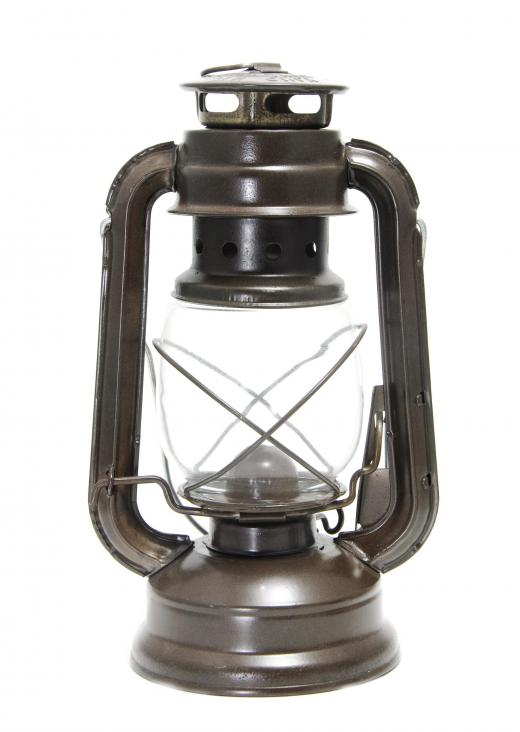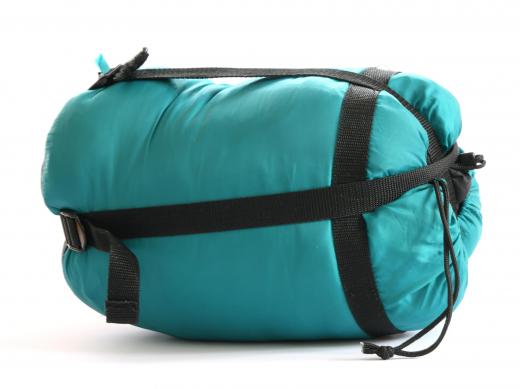Ready to head out into the wilderness? For those looking for adventure in the wilds, there are many different types of camping gear to choose from. The specific pieces of camping gear chosen and their quality level depend on where the camper is heading, how long they intend to stay, what the weather will be like, what they intend to do, and how much they are willing to spend. A few different types of camping gear are as follows:
Sleeping Bag. The sleeping bag is the quintessential piece of camping gear. It is a sort of zippered blanket that keeps the camper warm when sleeping. Sleeping bags are rated for use within specific temperature boundaries. Some campers use only a sleeping bag and possibly a tarp when camping, but most others rely on additional equipment.

Tent. A tent is a portable shelter made out of fabric and other materials. It is where most campers choose to sleep, and also where they store a lot of their belongings when at camp. Tent sizes are generally defined by how many people can sleep inside of them. People that are not used to sleeping in close quarters may wish to use a tent that is larger than the number of people expected to sleep in it. For example, a family of three staying in the same tent might prefer one that can fit at least four people, if not more.

Air Mattress, Cot, or Sleeping Mat. The ground in the wilderness is often less comfortable than a person is used to sleeping on. Air mattresses, cots, and sleeping mats all provide additional comfort to campers, and may keep them dry if their tents leak. An air mattress is simply a large mattress filled with air, and usually requires an air pump to fill. A cot, or camp bed, is a type of sleeping mat or piece of fabric suspended by a frame. A sleeping mat is a padded object the general size of a person that is placed on the ground and slept on.

Tarp. A tarp is an all-purpose item that is found on almost every camping trip. Specifically, it is a large piece of water-resistant material that can be placed under or over things in order to provide protection from the elements. Tarps can be used to make simple tents, pulled over existing tents to protect from the rain, put under tents to protect the floor from being damaged, and other protective activities.
Rope and Bungee Cord. These pieces of camping gear are used to secure almost everything, including tents, tarps, equipment, and people.
Tent Stakes (Tent Pegs). Tent stakes are used with rope or bungee cords to secure tents and tarps at a camp site. Without them, wind or sloping ground might cause tents to move.
Canteen or Water Bottle. Water is not always available in the outdoors, so campers should take some with them. Filled canteens and water bottles provide a portable water supply when venturing away from the camp site.

First-Aid Kit. Injuries can happen while in the outdoors. The problem is, medical assistance is often not very close. Bringing a first-aid kit to treat minor injuries, stop serious bleeding, and get medicine for various bites is very important for any camper.
Flashlight and Lantern. It can get dark in the woods since there are no streetlights. Flashlights and lanterns allow campers to see at night. Lanterns come in many varieties, including battery-powered and fueled. Flashlights also come in different styles, including those with color lenses to avoid damaging night vision and headlamps that allow campers to use their hands.
Matches. Some people can start a fire with a flint-and-steel; most people need something more. Waterproof matches are useful for lighting lanterns in the rain; wooden matches, however, are the standard.
Mess Kit. This is a portable, folding device that contains a small skillet, pot, cup, and plate. Some also contain canteens.
Knife, Axe, or Saw. In the outdoors, things often need to be cut. Knives are useful for cutting ropes, tarp, food, and stuck clothing. Axes and saws are needed to cut larger things, like tree limbs for firewood or fallen trees to unblock roads.
Cooler. Coolers are large, insulated storage devices usually used for food. On short trips, ice can be put inside a cooler in order to keep food cold. On longer trips, coolers work well to keep pests like ants and flies out of the food.

In addition to the above-listed camping gear, the following items may also be helpful: a backpack, broiler basket, camp grill, camp griddle, camp stove, camping mirror, can opener, compass, flint-and-steel, GPS locator, ground cloth, hammer, iron skillet, insect repellent, map, plastic bag, rubber mallet, shovel, sunscreen, and a tent mat.
